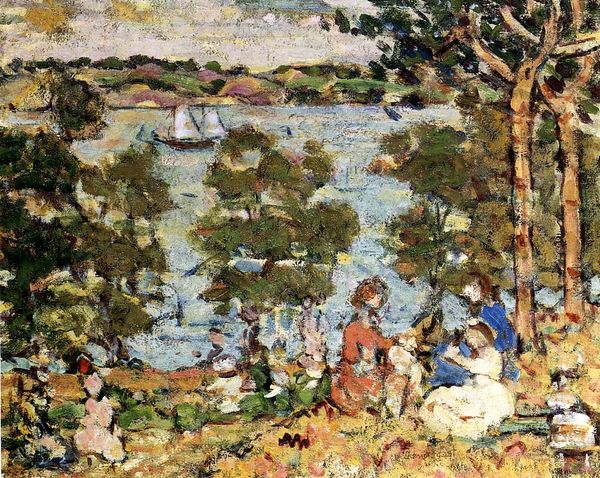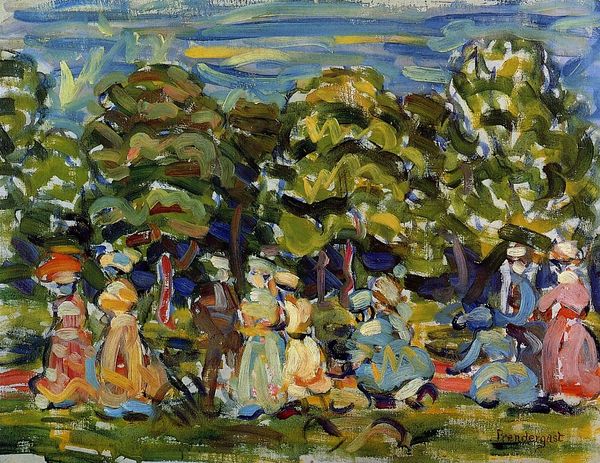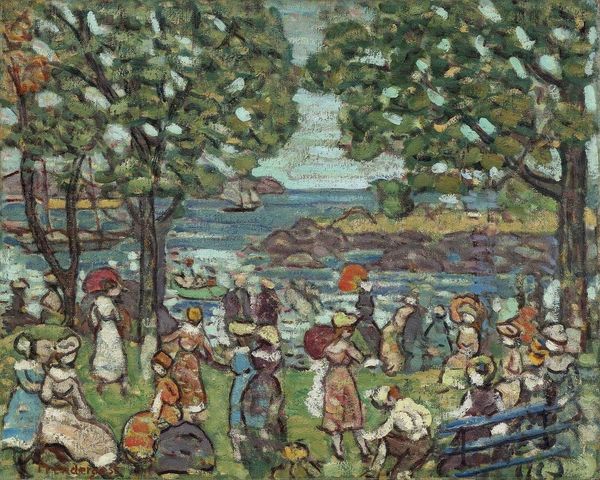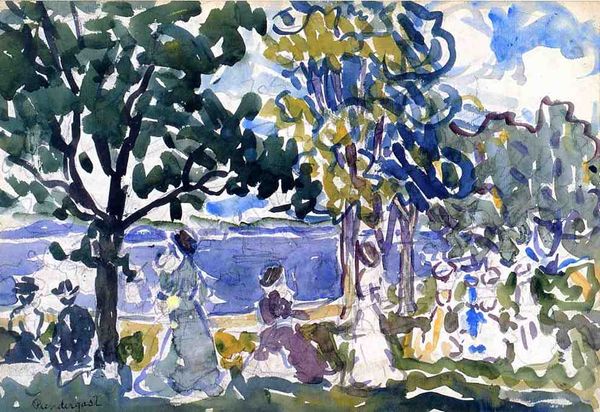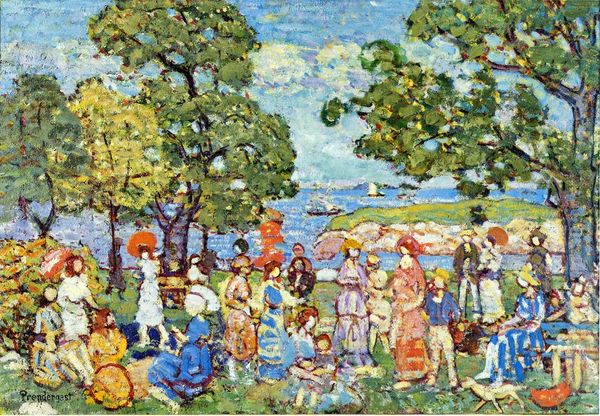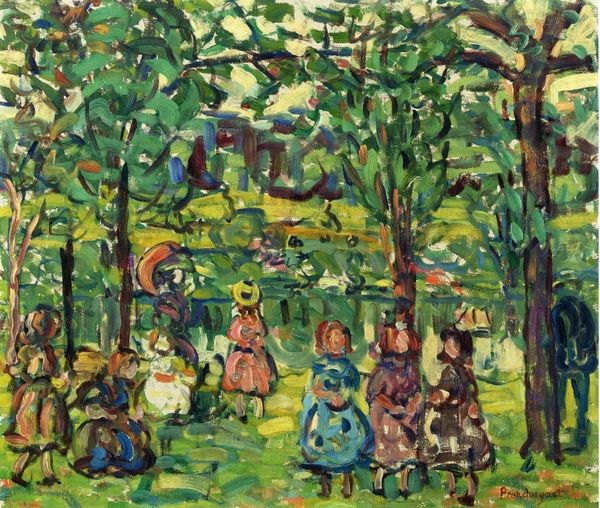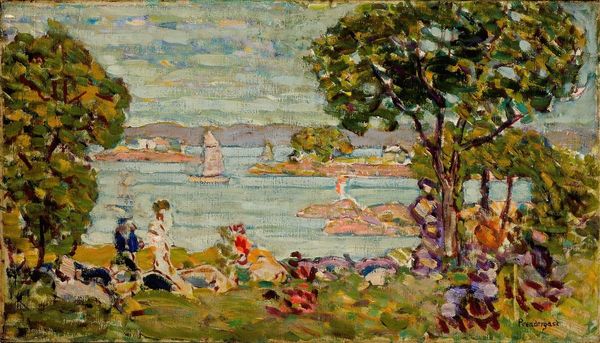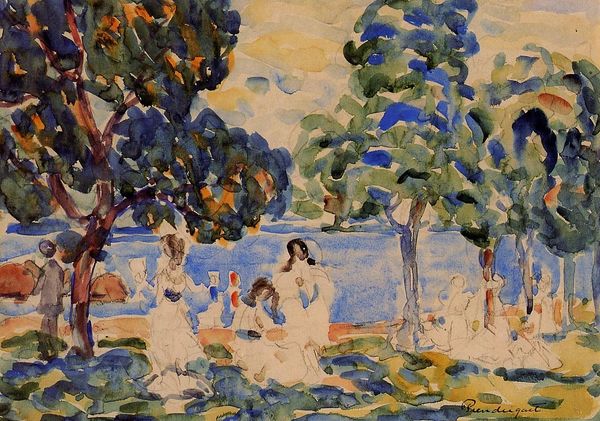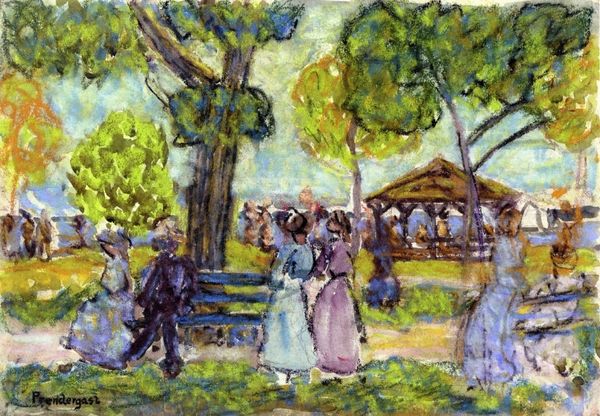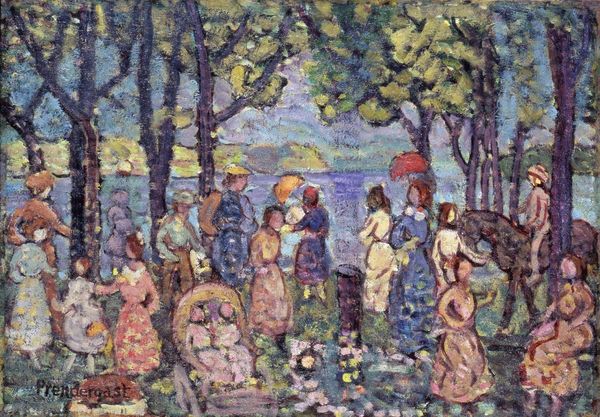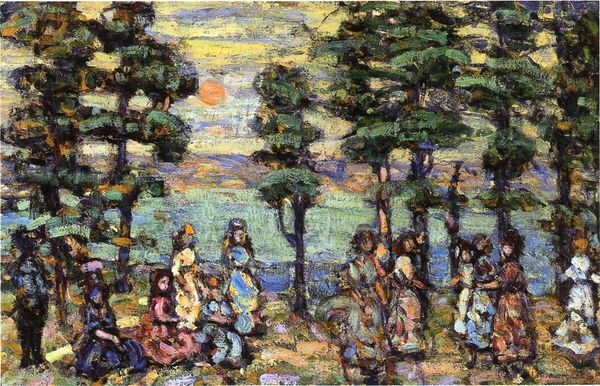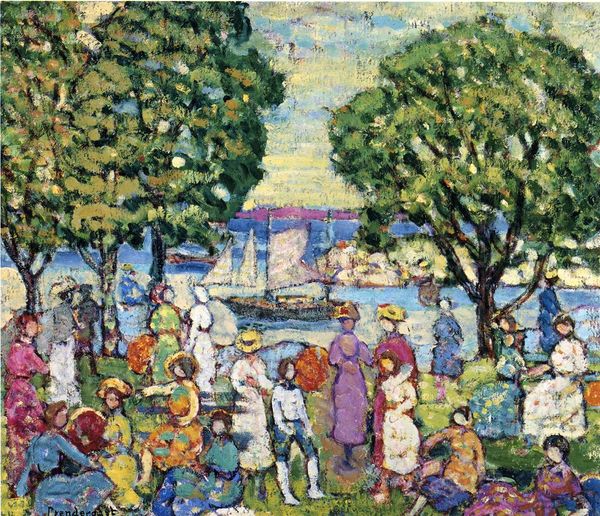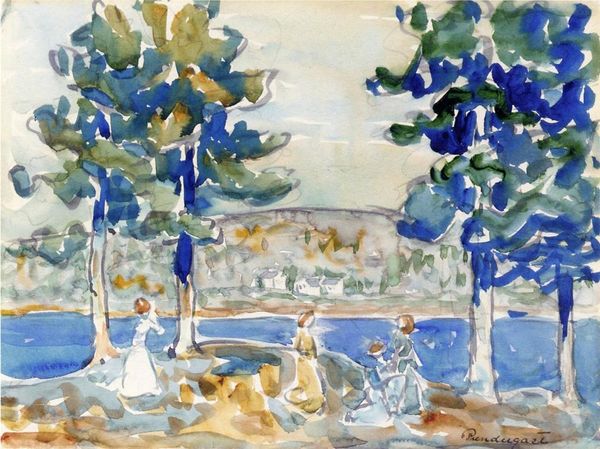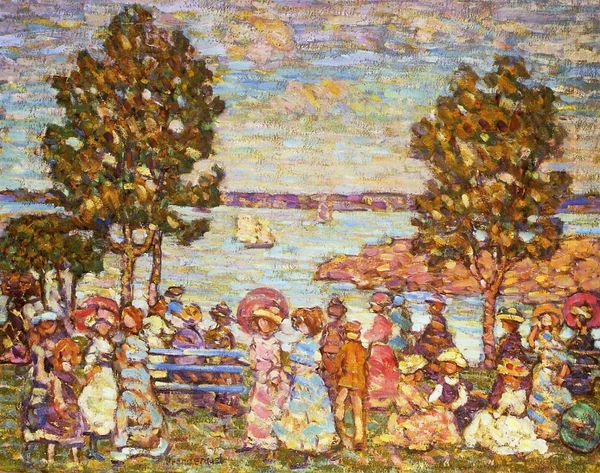
Dimensions: 30.8 x 45.4 cm
Copyright: Public domain
Editor: Here we have Maurice Prendergast's "Girls on the Riverbank," a watercolor painting from 1913. It feels light and airy, capturing a casual scene of leisure. The figures are almost swallowed by the landscape. What do you see in this piece? Curator: I see a critical snapshot of early 20th-century American society. These women, likely from a privileged background given their clothing and leisure time, occupy a space often idealized as free and natural. But the painting invites us to question: free for whom? Nature, too, is socially constructed; consider its use throughout history for escapism by those seeking to ignore societal pressures and inequalities. How might class or race shape their relationship to the landscape? Editor: That's interesting! I was just thinking about the Impressionistic style, the quick brushstrokes and dappled light. It seems like pure aesthetic enjoyment. Curator: But the very act of portraying leisure and the specific type of leisure that requires access to the countryside also reflects social power dynamics. These “impressions” were far from neutral. Does the fluidity of watercolor perhaps soften our gaze to accept these class-based and gendered divides in access to leisure and nature? The women's ambiguous expressions prevent us from fully knowing their internal thoughts. Editor: I didn't think about it that way. The haziness gives it an ethereal feeling, but you're right; it hides as much as it reveals. Curator: Exactly! Prendergast offers us a glimpse, but it is crucial to consider what this glimpse obscures. The historical and social contexts are integral to understanding the artwork’s full meaning. It makes us consider which women have had the privilege of leisure in history. Editor: I definitely have a new appreciation for looking beneath the surface. Thanks! Curator: It's about looking at art as a mirror to society, a reflection that might reveal some uncomfortable truths. Thank you, this was a very insightful conversation!
Comments
No comments
Be the first to comment and join the conversation on the ultimate creative platform.
